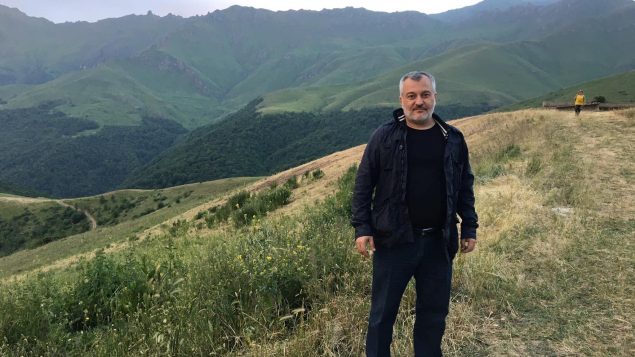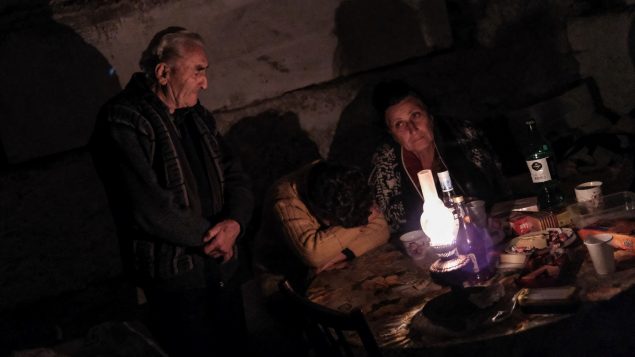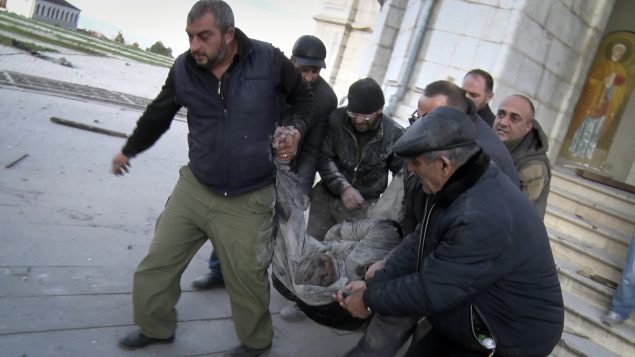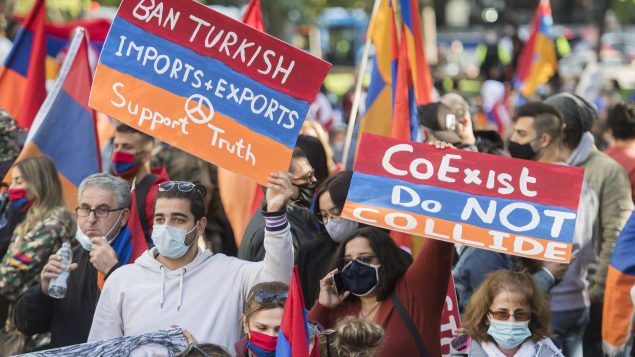Members of Toronto’s Armenian community are mourning the death of a Canadian-Armenian businessman and community activist who was killed in Nagorno-Karabakh on Tuesday.
Kristapor Artin, a former Toronto resident who moved to Armenia in 2011, was killed while fighting against Azerbaijani forces in the breakaway Armenian-populated region, the Armenian National Committee of Canada (ANCC) announced on Wednesday.
“It is with great sorrow that the Canadian-Armenian community mourns the passing of one of its repatriated members, Kristapor Artin,” the ANCC said in a Facebook post, adding that he was “an active member of the Toronto Armenian community, before repatriating with his family to his homeland, Armenia.”
“Our deepest condolences to his family and loved ones. May his soul Rest In Peace.”
According to a brief statement from the Armenian Revolutionary Federation (ARF), one of the oldest political parties in Armenia and the worldwide Armenia diaspora, Artin was one of several ARF volunteers who were killed while trying to recapture a strategic point in the region.
Fierce fighting broke out on Sept. 27 along the entire Line of Contact that separated Armenian and Azerbaijani forces since a Russian-brokered ceasefire in 1994 as Azerbaijan moved to reclaim the breakaway region.
‘He volunteered to go’

Former Toronto resident Kristapor Artin was killed during fighting in the disputed region of Nagorno-Karabakh on Oct. 6, 2020. (Photo supplied by Sevan Hajiartinian)
Sevan Hajiartinian said she’d known Artin since her childhood, when he was her camp counsellor in Toronto. She said she was shocked and devastated by the news.
“But at the same time I wasn’t surprised that he was the one who went there… because of his passion for Armenia, his passion for our people,” Hajiartinian said. “He volunteered to go, he wasn’t doing this as a job, it was purely his choice that he chose to go and fight for his country.”
Artin came to Canada in the early 1990s from Lebanon and became an active member of the growing Armenian community, Hajiartinian said.
“He was a proud Canadian and loved Canada but at the same time he taught us to be passionate about our Armenian identity, to always remember our roots,” Hajiartinian said. “He was a very humble, honest, loyal friend and mentor.”
Artin moved to Armenia in 2011 and settled in Kapan, a small copper mining town, in the country’s mountainous southeast, not far from Nagorno-Karabakh.
In an interview with TorontoHye, an online Armenian community publication, Artin described how after initially working in the mining industry, he set up his own business in the fashion industry, as well as a farm for breeding chinchillas.
Hajiartinian said they visited Artin in Armenia in 2013 during a family vacation and she last saw him when he came for a visit to Canada in 2018, but they kept in regular contact.
Civilians flee shelling
The fighting in Nagorno-Karabakh has already killed more than 350 Armenian military personnel and 19 civilians, according to the region’s Armenian officials.
Azerbaijani authorities say 31 Azeri civilians have been killed and 154 wounded since Sept. 27 but have not disclosed any information about their military casualties.

Civilians gather in the basement of a building used as a bomb shelter during a military conflict over the breakaway region of Nagorno-Karabakh in Stepanakert Oct. 5, 2020. (Areg Balayan/ArmGov/PAN Photo/Handout via REUTERS)
Half of Nagorno-Karabakh’s Armenian population has been forced to flee their homes due to incessant shelling of the region’s capital Stepanakert, as well as several towns and villages by Azerbaijani forces, regional officials said Wednesday.
“According to our preliminary estimates, some 50 per cent of Karabakh’s population and 90 per cent of women and children — some 70,000 to 75,000 people — have been displaced,” Nagorno-Karabakh rights ombudsman Artak Beglaryan told the AFP news agency.
Speaking at a press conference in the town of Goris in Armenia on Thursday, Lt.-Col. Artsrun Hovhannessian, the spokesperson for the Armenian ministry of defence, said a group of foreign journalists was injured earlier in the day during the Azerbaijani shelling of the Ghazanchetsots Armenian cathedral in the town of Shushi.
The cathedral was damaged earlier during Azerbaijani shelling of the town and was targeted again during the visit by the foreign journalists, he added.

In this image taken from a video provided by ArmNews TV, people carry out an injured man from the Holy Savior Cathedral after shelling the Cathedral by Azerbaijan’s artillery during a military conflict, in Shushi, outside Stepanakert, self-proclaimed Republic of Nagorno-Karabakh, Thursday, Oct. 8, 2020. (ArmNews TV via AP)
The exact number of injured reporters and their nationalities were being investigated, Hovahnnessian said.
Canada has joined the growing chorus of international voices calling on Azerbaijan and Armenian authorities in Armenia proper and in Nagorno-Karabakh to agree to an immediate and unconditional ceasefire.
- Canada, U.K. call for ceasefire between Armenia and Azerbaijan
- Canada suspends exports of military drone technology to Turkey
- Armenian community demands Ottawa ban military drone tech exports to Turkey
Today, Global Affairs Canada said it’s advising Canadians against travelling to the region.
“Global Affairs Canada is aware of reports of the death of a Canadian citizen in the region of Nagorno-Karabakh,” the department told Radio Canada International. “Consular officials are liaising with local authorities to gather additional information. Due to the provisions of the Privacy Act, no further information can be disclosed.”
The federal government says it knew of 147 Canadians in Armenia and 117 Canadians in Azerbaijan as of two days ago. Registration with the federal government is voluntary for Canadians living abroad, so the true numbers might be higher.
Nagorno-Karabakh broke away from Azerbaijan in December of 1991 — weeks before the Soviet Union crumbled — after its majority Armenian population voted overwhelmingly to declare independence. Nagorno-Karabakh’s minority Azerbaijani community boycotted the referendum and Azerbaijan has never recognized its results.
Azerbaijan’s attempt to reclaim the breakaway region by force resulted in a military defeat and Azerbaijan was forced to agree to a Russian-brokered ceasefire in 1994. The war in the early 1990s resulted in about 30,000 deaths and nearly a million refugees.
Since then, Nagorno-Karabakh has been self-governed by the local Armenian population, with full economic and military backing from neighbouring Armenia. No country, including Armenia, has recognized Nagorno-Karabakh’s independence to date.
After nearly 30 years of on-and-off negotiations supported by the Organization for Security and Co-operation in Europe’s (OCSE) Minsk Group, the Azerbaijani and Armenian sides have failed to reach a mutually satisfactory resolution.







For reasons beyond our control, and for an undetermined period of time, our comment section is now closed. However, our social networks remain open to your contributions.